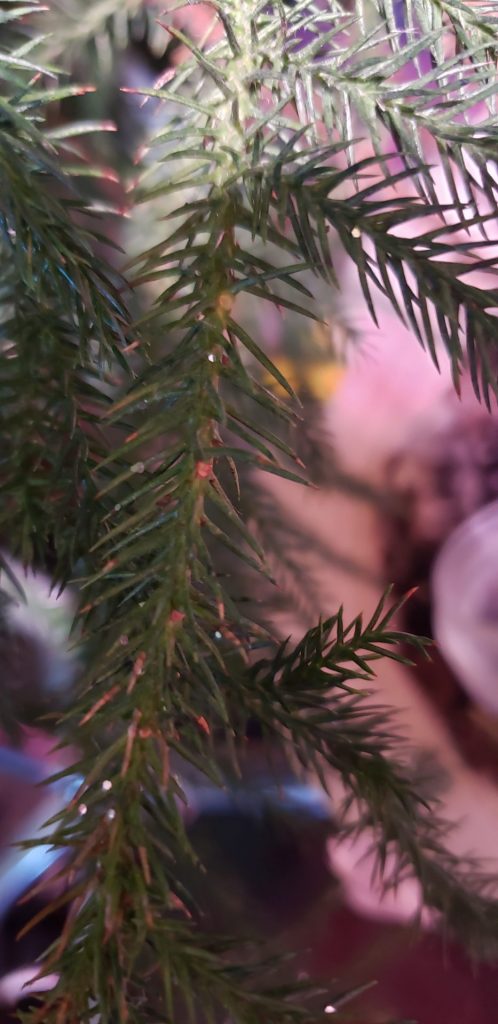
I’ve had my indoor Norfolk Island pine for a little over a year and, since January, he’s been showing weird reddish brown tips, brown spots directly on the branches, and a strang scab-like wound on one of his trunks. I’m attaching a picture of a branch with the weird tips and spots.
Here’s a bit more info about him: he uses a grow light because my house gets little sunlight and it’s too windy for him outside. He has a Miracle Grow potting mix and a 1-1-1 liquid Miracle Grow fertilizer that I double the suggested amount per oz of water because I couldn’t find a 2-2-2 liquid one. I live in North Carolina, but I brought my tree to DC when I visited in January, which was when I noticed the symptoms, so I’m thinking he may have picked up something in transit.
Please let me know if you need further information to help me figure out what’s wrong with him, and thanks in advance for any help!
There are many possible causes for your Norfolk Island Pine’s problems. And, unfortunately, it is not always possible to cure a plant with these symptoms.
Your plant may have suffered from cold when you moved it from North Carolina to DC. Norfolks are frost-sensitive. Foliage damage begins when temperatures dip below 40 degrees Fahrenheit. At 30 to 32 F, the tree’s tips stop growing and die. Temperatures below 25 F damage the tree irreparably. High temperatures over 95 F can also cause tip damage. If your tree started browning after exposure, that could be the cause.
Sudden relocation can also cause brown needles, and entire branches may drop. Norfolks need to gradually acclimatize to new settings and light levels whenever possible. Indoor Norfolks need cool, bright locations away from drafts and heating or air-conditioning vents.
Another possibility is Anthracnose caused by the fungal pathogen Colletotrichum derridis b which browns Norfolk needles. Known as Collectrichum Needle Blight, the disease starts with small spots and then entire needles turn brown and die. Large branch sections may turn brown and needles will drop. Close inspection will reveal small, black, speck-like fungi. Foliage kept too wet for too long is the offender in this case.
Mites can cause brown Norfolk leaves. They hide well until needles start puckering or turning brown. Shake a Norfolk division on a white piece of paper to see if mites fall. Raising relative humidity to Norfolk’s favored 50 per cent frequently relieves mite problems inside. Insecticidal soap also helps get rid of the insects. Spray all plant surfaces thoroughly using ready-to-use insecticidal soap, including undersides of leaves.
Norfolk does best when it gets direct sunlight and enough moisture. The humidity level in most houses is much lower than what the Norfolk Island Pine needs, so misting it often with a spray bottle will help. A humidifier would help, too.
For more detailed information here are some websites dealing with Norfolk Island Pines:
http://www.critchfield-construction.com/what-to-do-if-your-norfolk-pine-starts-turning-brown
https://www.groundedandgrowing.com/norfolk-island-pine/
https://homeguides.sfgate.com/norfolk-pine-starts-turning-brown-103798.html

